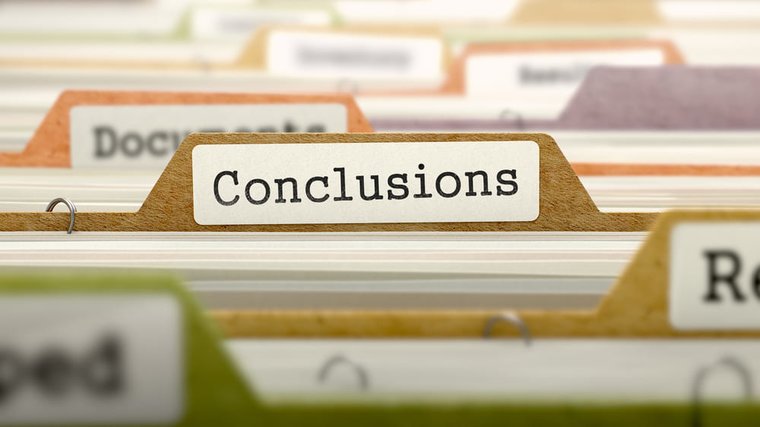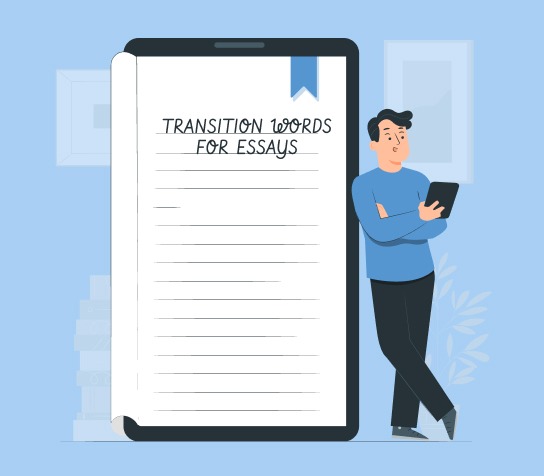How to Write a Conclusion | Make a Long-lasting Impression
Published 06-18-2023
30182

How to Write a Conclusion | Make a Long-lasting Impression
You may know what you want to say to wind up your scholarly or academic writing project, say an essay, but, do you know how to write a conclusion correctly? Do you know how to start the process of summarizing your points? Well, you are not alone in this, especially given that you have found yourself here at Literary Owls to begin with!
The conclusion paragraph of any essay, or other scholarly projects such as research papers and general coursework, is a critical component that is sometimes disregarded. A scholar, researcher or student can come up with the most fantastic, effective piece of academic writing but, their entire argument can collapse if they do not correctly and effectively wrap it all up with an impressive conclusion. Simply put, a weak conclusion often leaves the audience with the impression that they lack the closure required to agree with your entire argument.
So, how do you go about correcting this and crafting a terrific summary that captivates your audience? That is why Literary Owls with its team of night owls is here to assist you. Do not worry if you reach the end of your paper and feel a mounting pressure regarding how to effectively wrap it up with an effective conclusion! This article is specifically tailored to help you learn how to begin a conclusion that makes a lasting impression on your audience.
What is the point of a conclusion?
First things first, what is a conclusion paragraph and what is its primary role in your essay? By description, a conclusion paragraph, according to BestColleges.com, summarizes the thesis and evidence to convince the reader further, elevates the essay by bringing a new insight or something extra to create an impression on the reader’s part, and works to leave a long-term impression that links an author of the essay, paper or research closer to their audience.
As such, the conclusion paragraph is essentially the section of a research project or essay in which a scholar, researcher or student demonstrates to their reader that they have completed everything that they stated in the introduction section. In other words, the reader is being provided with the information they require to create their own informed judgment or choice about the issue being raised by the author or views being presented by the writer.
Therefore, the conclusion informs the reader that they have reached the end of the research, essay or article and should take their time to ponder upon the facts and evidence provided in the work. Without an effective conclusion, a scholar, researcher or student not only exposes their readers to uncertainties regarding their work but also leaves them hanging by giving them nothing to think about after they have worked so hard on their essays.
Your conclusion should always leave a lasting impression
The primary purpose of a research, essay or article conclusion is to create a lasting impression on the audience or to offer them something to ponder about. It is the last section of the paper that the audience reads, and most likely the last thing they shall remember.
Your last impression matters as much as your first impressions. You have possibly walked away from an awkward interaction with someone after saying something embarrassing once or twice in the past. When this happens, you usually think about the opinion that the other person will have about you. Will they think you are awkward or strange because of the incident? Well, this is what we mean by a lasting impression, and it is no different when it comes to your research, essay and general academic paper writing projects.
The introduction of a research paper, essay or article usually sets the tone for everything that comes next. Think of it as appetizer that offers a tasty morsel of what is to come whereas the body is that fantastic dinner. Using the same rationale, the conclusion is definitely dessert. Other than creating a sense of completion and balance to a meal, dessert is the part that satisfies those sweet cravings! One is more likely to remember the dessert because they ate it last and used it to cap off their meal with a sweet finish. This holds true for the conclusion of a research paper, essay or article.
Begin narrow and expand
It is best to start your conclusion is to begin narrow and then expand it gradually with additional material. According to Katherine A. Palmer, thinking of essays as triangles is a useful approach to nailing your academic writing tasks. Palmer emphasizes thinking of conclusions (and introductions) as triangles since the shape represents specificity. For instance, the triangle is flipped upside-down in the introduction since it begins rather generally, and goes on to be more specific by the last sentence, or the thesis.
Similarly, the conclusion is an upright triangle that transitions from specificity to more general terms and, lastly, to why the thesis and paper are critical in the real world. This is basically the inverse of the introduction. As stated earlier, you are doing the same thing you did at the start of the paper, but in inversely, in the conclusion. In other words, you start your introduction with your thesis statement, followed by an outline of the main points and arguments, an analysis that leads to a conclusion, and a conclusion that has a compelling sentence or two.
Scholars, researcher and students should use this approach in conclusions in any form of academic writing, including essays. The conclusion should have the answer (thesis statement), summary (major points), and significance (the relevance of the points and any implications discovered by your research).
Scholars, researchers and students would want to do this because they have already provided their readers with a wealth of information and have outlined everything they need to say in the body of their work. They need to remind their readers the information and provide a concise review of the important points they presented. Their readers will then have a good concept of what they think about the facts and will be able to build their own opinion about the arguments or facts presented in the piece of work.
Your thesis statement restated
The best place to start when determining how to write a conclusion (or how to develop and polish your conclusion) is with your thesis statement. As stated above, an excellent closing paragraph should begin with a restatement of your thesis statement. This is not to say that you should copy and paste your introduction's thesis statement. Consider paraphrasing it such that carries the same message, but put in a different way.
One way of ensuring that your thesis statement is not a copy-past is reversing the order in which it was composed but keeping in mind not to distort the meaning as well as the sequence of the most important points. That sounds difficult, right? Not really! It is as simple as introducing the issue before the primary points or arguments, as opposed to the other way around.
Consider the following analytical thesis statement found in Purdue OWL:
“High school graduates should be required to take a year off to pursue community service projects before entering college in order to increase their maturity and global awareness.” A restatement of this thesis statement for the purpose of our conclusion would yield something like “creating a more mature and globally aware population are the core reasons why high school graduates should be required to take a year off to pursue community service projects before entering college.”
This is just but a simple analytical thesis statement and a scholar, researcher or student should consider developing a rather sophisticated one. Nonetheless, the example shows how reversing the order in which the reasons are introduced can be sufficient to repeat the thesis in the conclusion.
Finding the right words to begin a conclusion
For any type of academic writing to flow seamlessly, transition words are a must-have. They are a vital aspect of every essay, and scholars, researchers and students should consider incorporating them in their conclusion paragraphs. Transition words refer to words and phrases used in connecting sentences. Their functions resemble those of conjunctions in that they connect sentences and help your academic writing to flow smoothly and build relationships between important topics.
Since the purpose of your conclusion paragraph is to summarize and wrap things up, transition words are essential.
Here are some nice transition words for your conclusion that will assist summarize your main points:
- To clarify
- To summarize
- Finally
- To sum up
- In a word
- In brief
- On the whole
- Briefly
- In the end
While at it, transition words should also appear in conclusion sentences within the body of your essay. You must have some form of transition at the end of each argument that leads into the succeeding point and in paragraphs leading to the next ones.
Read our most recent blog post to discover more about transitions, transition words and phrases, and how to use them correctly in your academic writing! We provide you some awesome tips on how to use transition words and phrases, as well as a list of 150+ transition words and phrases from which to choose.
Wrong ways of how to write a conclusion
Now that Literary Owls has equipped you with skills on how to begin a conclusion, we also feel that it is our obligation to inform you on what NOT to do while beginning your conclusion paragraph. As such, it is critical that some things are avoided in the conclusion section as in other parts of your research, assignment or essay. This ensures that a student gets high grades by meeting all the requirements that the professor is on the lookout for.
Literary Owls advises you not to do any of the following:
- Begin your conclusion with a broad term like “in summary” or “in conclusion.” These transitions are acceptable within the body of your paragraph, but not as the first sentence of your conclusion.
- Introduce any new ideas or arguments that were not discussed in the essay’s or research’s body. The goal of having a concluding paragraph is to summarize what you have already mentioned, not to introduce new points.
- Include new evidence to support a previous position. As indicated above, including new ideas, points or facts in your conclusion is ineffective. Instead, this evidence should be included in the relevant body paragraph.
- Apologize or put your point of view on the defensive by using words and phrases such as “while I am not an expert, the evidence ....” Instead, your statements should be firm and assertive.
- Go over unimportant elements that were used as supporting ideas in the body. Instead, major on the main points concisely since the reader has already gone through the supporting arguments.
- Make your conclusion too long or too short. Instead, it should be proportional to the length of the essay.
Creating the balance of your conclusion
So, now that you have learnt how to write a conclusion paragraph for your academic writing tasks as well as what not do courtesy of Literary Owls, you might be at a crossroads on what to do next.
First, you have to follow the appropriate essay structure in your essay or project, regardless of which paragraph you are writing. Adhering to these norms is a must if one aims to get that coveted A+ while ensuring that your work flows seamlessly.
Each paragraph has its own format to which you must adhere. As we have learnt so far, a concluding paragraph, for instance should have the following format.
- A thesis statement or topic sentence
- Recap and connect your primary ideas and arguments.
- A strong concluding sentence
Of course, as a scholar, researcher or student, you will need to fill in the blanks between the respective areas of your conclusion paragraph. However, you should always follow the aforementioned format to ensure that you have exhausted everything for to leave an effective and lasting impression on your essay’s, article’s or research’s audience.
Respond to the “so what?” question
According to Indiana University’s Writing Tutorial Services, the “so what” strategy is an effective approach to writing impressive concluding paragraphs since it encompasses taking into account the implications of the arguments presented which may be beyond the points already made in the essay or project. This strategy provides an opportunity for readers of the works of scholars, researchers and students to understand why their arguments are important in wider context or how they are applicable in the context of larger concepts.
However, the “so what” strategy may be challenging to apply when completing papers in which topics are given as opposed to topics in which the student selects. In as much as it may be simple to identify in persuasive or argumentative essays, it is increasingly challenging to determine in say a research paper, article summary, or even a reflection paper.
Indiana University’s Writing Tutorial Services states that a scholar, researcher or student ought to ask themselves the question "how does my argument affect how I approach the text or issue?" in order to use this strategy.
How to effectively summarize your arguments
The key to writing an effective conclusion is summarizing the points you made in the body of your research project or essay. Using this section, the audience ought to be reminded why the paper was written in the first place.
One effective approach of summarizing your main points, arguments and ideas is going back and reviewing the topic sentences you used for each body paragraph. The topic sentences should contain your key points that you introduce in each part. As such, you need to restate and slightly expand on them and, as previously stated, all the details should not be repeated. This is because the conclusion should be primarily in your own words.
Literary Owls recommends keeping in mind not to just repeat the facts already provided when summarizing the main points in the concluding paragraph because the audience has already read them. Instead, one ought to just touch on them while explaining the underlying analysis of why the work was written as well as providing the context for how all of the main points, evidence and facts fit together.
Final recommendations for writing your conclusion paragraph
Here are some helpful advice to keep in mind when you write your conclusion paragraph:
- Link the paper’s main points or ideas to the wider context in everyday life or in the area of specialization.
- Challenge the audience since they may end up finding a solution to the problem, or end up seeing the world in a fresh light.
- Pose a thought-provoking question to the audience.
- Make a call to action for the audience.
- Consider repeating your introduction and flipping the message if you get stuck! This is an effective method of emphasizing on what you delivered as opposed to what you are about to present.
Tired of attempting to figure out how to begin a conclusion? Allow Literary Owls to help you!
There is no need to waste time learning how to begin a conclusion paragraph if you do not want to, especially given that Literary Owls is literally on your side! We are willing and ready to help you! As a matter of fact, we will gladly take on the entire research paper, assignment or essay so that do not have to worry about any of the challenging parts.Our team of night owls is made up of genuine, highly educated, and experienced professionals who are experts in their respective fields, ranging from humanities and social sciences to health sciences and arts. As such, we always have a night owl available to write that conclusion for you perfectly.
Literary Owls also provides scholarly and academic writing advisory services in a variety of areas, including dissertation, thesis, lab report and research paper writing advisory, just to name a few. All you have to do is click and order, and leave us to handle the rest for you.
Get the grades you deserve now with Literary Owls’ personalized essay writing consultancy and advisory services!




